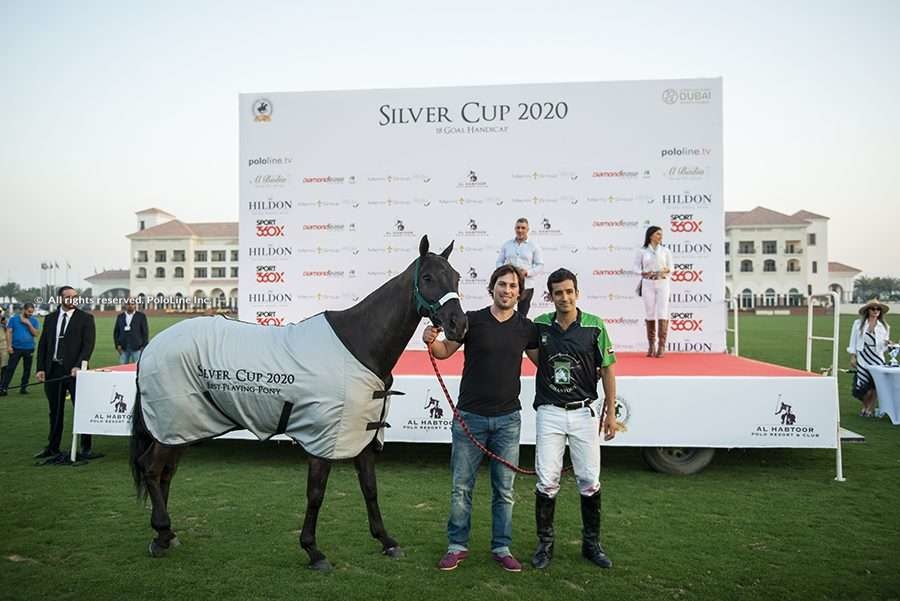By Alejandra Ocampo
Marcos ‘Cacu’ Araya comes from one of the most prestigious and traditional families of polo. A large family that has given a lot to the sport, and continues to leave thrive, be it as a breeders or as players.
Cacu Araya is the son of Benjamin Araya and grandson of Horacio – two players who won Argentine Open. Cacu’s performance in the United Arab Emirates made him one of the top players of the season. As Ghantoot’s leading man, he won the Silver Cup, and qualified for the semifinalist of the Gold Cup, both tournaments played at Al Habtoor Resort and Polo Club.
After the suspension of Ghantoot Polo Racing & Polo Club’s premier competition, the H.H. President of UAE Polo Club, due to COVID-19, PoloLine met up with Cacu Araya in Abu Dhabi to speak about one of his favourite topics: horses.
Can you describe your ideal polo horse?
The perfect polo horse has to have a mixture of everything – mouth, speed, curves, mentality, a good physique, and be an overall winner.
In your opinion, what is the most important characteristic every good polo horse should have?
A good temperament. If the horse has a good temperament, they will always be able to play polo, whether they are good or not.
What is the ideal number of horses to have in a string?
For a six-chukka tournament, I think ten horses per player is a good number.
On average, how many horses should join a player’s string each year?
It is always important to bring new horses in. It all depends on the performance of the two or three that don’t work that well in the string, and on how the new ones develop. It would be great to replace the best two or three every year, but it is very difficult to get horses that are better than those at the top of the string. That’s why you end up replacing the worst ones.
What is the most important part of the training process?
Every stage is important – breaking in and training. A horse needs time, and not to be pushed too hard. You can’t ask them to give more than they can. That way, you get a horse that is able to play polo at 7-years of age, no matter how well they play, they can play polo. But if you push them too hard, you may get a good horse, but you leave the other horses behind, the ones who needed more time training and had more to give. It all depends on what the breeder needs.
Which is, or has been, your favourite horse and why?
My favourite horse is Galleta, a mare I played for many years. She was fantastic, maybe one of the best I’ve ever ridden. She was exceptionally good: she stopped, turned, and always gave the best she had. Those are, in my opinion, the characteristics of a good mare.
Which is, or has been, the best polo horse you have ever seen play, and why?
Dolfina Cuartetera. She is very impressive in every sense. She is like Diego Maradona! It will be very difficult to see a mare as good as her in years to come.
Is there any horse in particular that you would like to try?
Dolfina Cuartetera, definitely!
